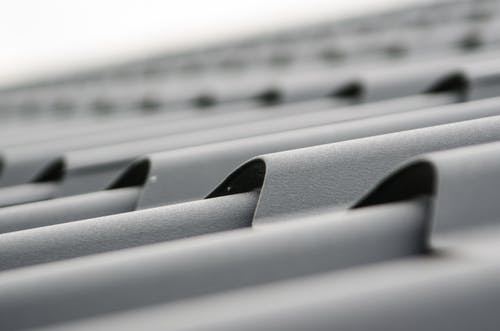Advertisement
If you are looking to replace your roof, you might have looked at a variety of shingles and wondered how they are made. You know how sturdy they are and how long they last but might be curious as to what makes them look like they do and last as long. Here are some interesting facts.
Materials
These days, roofing shingles are made from many different types of materials.
Wood
Wood shingles are usually made from pine or cedar. While years ago, they were cut from old-growth trees, they are now made from new-growth trees. After being cut, they must be treated chemically in order to make them fire-resistant.
Aluminum
With a longer lifespan, aluminum shingles have a rectangular shape. To make them look like smaller, individual shingles, they can be cut along one edge to simulate this effect. Aluminum shingles are made to interlock with their adjacent shingles as they are being installed. This makes them more wind resistant.
Asphalt
Asphalt has long been used in roofing. There is evidence that the ancient Babylonians used this material between clay bricks. Starting at the end of the nineteenth century, long strips of asphalt-coated felt finished with a layer of finely crushed stone have been used for roofing in the United States. After the first two decades of the twentieth century, asphalt shingles truly took off and became favorites in most residential construction. The look of today’s asphalt shingles has its origins around 1950.
Composite
Composite shingles are asphalt shingles with a base made from organic felt or fiberglass. This felt is made of cellulose fibers that are extracted from wood or recycled waste paper. The fibers are transformed into a water-based pulp that can be formed into sheets, allowed to dry and cut into strips. Using a base of fiberglass, it is possible to make thinner, lighter shingles that are much more fire-resistant. Fiberglass filaments can also be finely chopped and mixed with water to make a pulp that is flattened into a thin sheet. Once the water is vacuumed out and dry, these mats can be sliced to the desired width and rolled.
Where does asphalt come from?
Asphalt is commonly obtained as a byproduct of the refining of crude oil. In some cases, it can also be found in naturally occurring deposits. In order to be able to work with this material, it is necessary to oxidize it first through a process that is known as blowing. It entails using bubbling air that passes through heated asphalt to which certain catalysts have been added so that a chemical reaction can take place.
After this process, the asphalt becomes soft enough to be formed into roofing shingles to which finely ground limestone is added. This is done so that the resulting material can be much more resistant to weather and fire. Ceramic-coated mineral granules are added as a topcoat. This not only results in a wide variety of asphalt shingle colors, but it protects this roofing material from the ultraviolet rays of the sun.
If you are interested in learning more about the different types of shingles available for your roof and how they are manufactured, visit https://portlandroofing.com/certainteed/ or call your preferred roofing contractor to make the best decision for your home.

